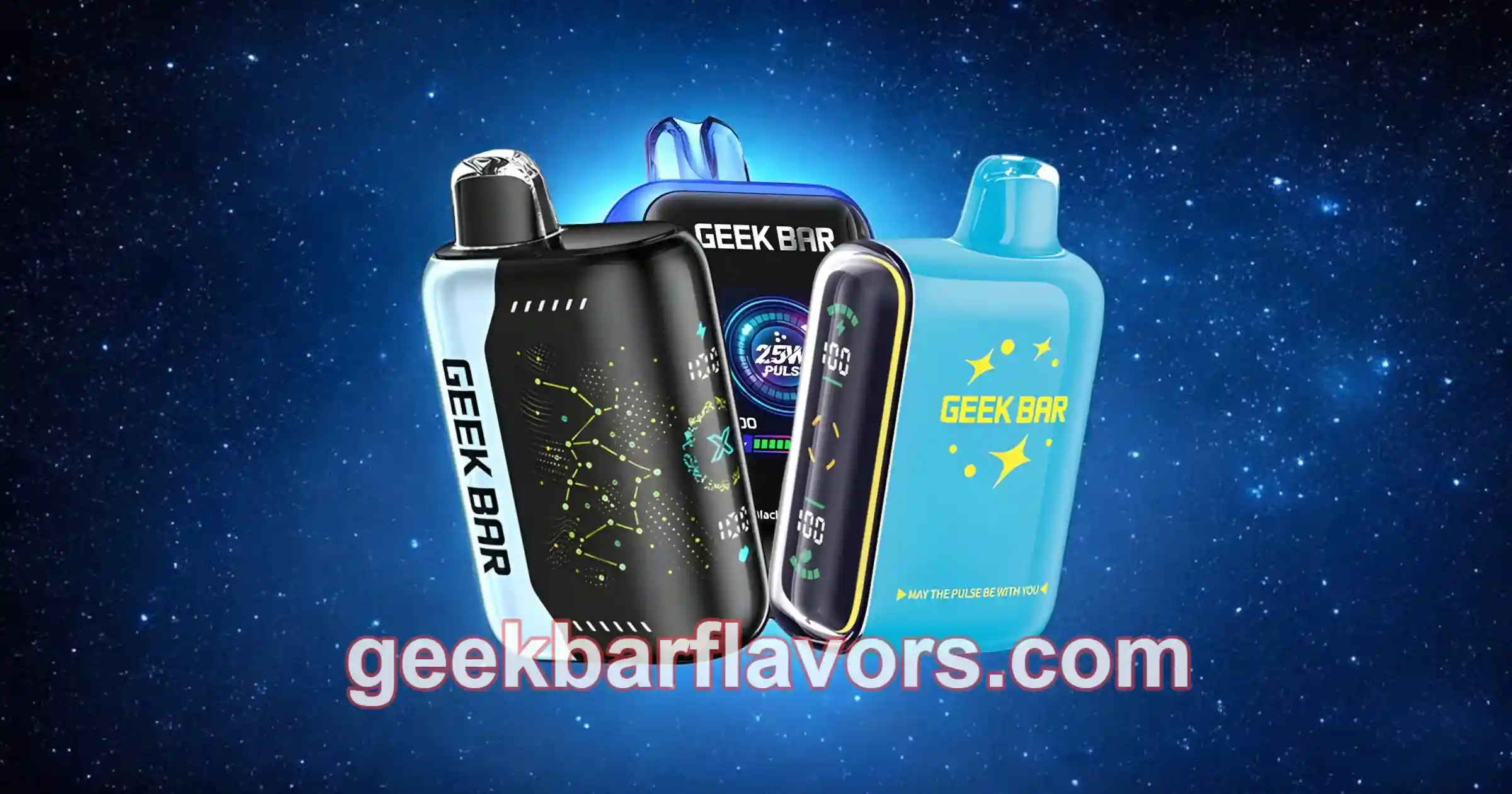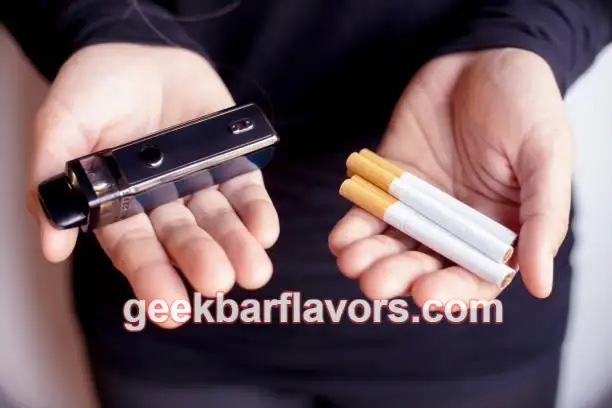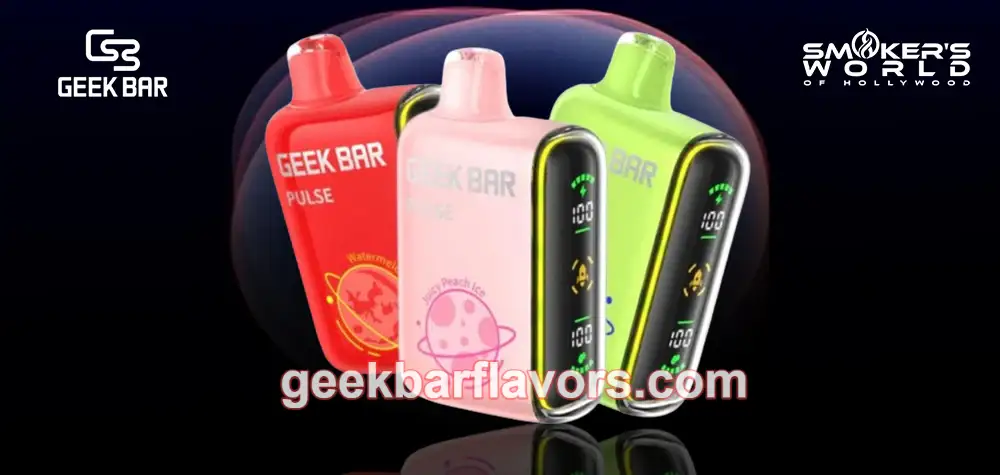Vaping: Is It Just a Trend, or a Health Crisis in the Making?
Let’s be real—vaping has exploded across the globe in the past few years, especially among teens and young adults. What started as a “healthier alternative” to smoking has quickly evolved into an industry of its own, with a growing list of concerns. From sleek devices and endless flavors like Geek Bar Meta Moon to ads that make it look like vaping is as fun as playing a video game, it’s hard to ignore the hype. But is it really that safe, or are we all getting hooked on something far worse than we think?
The Basics: What is Vaping?
At its core, vaping involves inhaling a vapor produced by an e-cigarette device. These gadgets, which run on rechargeable lithium-polymer batteries, heat a liquid (commonly known as e-juice or vape juice) to create a vapor that users inhale. Unlike traditional cigarettes, the vapor doesn’t come with the burning tar and ash, but that doesn’t mean it’s harmless. The liquid inside vape cartridges contains nicotine, which is highly addictive, but also comes with a cocktail of chemicals that vary by brand and flavor.
Let’s break it down: a typical vape is made up of three parts—the battery, the atomizer (or vaporizer), and the e-liquid cartridge. These elements work together to turn the liquid into a fine mist, allowing the user to inhale the "smoke" in the form of vapor. But is that vapor really as harmless as it seems?
Vaping vs. Smoking: Is One Safer?
For years, vape manufacturers claimed that vaping was a "safer alternative" to smoking cigarettes. And to some extent, they’re right—vaping doesn’t expose the user to the same deadly chemicals that come from burning tobacco, like tar and carbon monoxide. However, research has shown that while vaping is likely less harmful than smoking, that doesn't mean it's "safe." In fact, aGeek Bar Meta Moon or the wildly popular fcuking fab Geek Bar flavor might be fun to try, but they still deliver addictive nicotine and pose long-term health risks.
One of the main dangers of vaping is its addictive power. A single vape pod can contain as much nicotine as a whole pack of cigarettes (20 cigarettes), but it doesn’t end there. Some newer models can pack a punch with up to 600 cigarettes worth of nicotine in one device. This means that users, especially teens, might quickly find themselves addicted without fully understanding the consequences.
Teens and Vaping: A Dangerous Combo
Here’s where things get tricky. Vaping, particularly with the endless supply of flavors, has attracted a younger audience—many of whom might have never even considered smoking cigarettes in the first place. Flavors like bubblegum, crème brûlée, or even chicken and waffles are designed to be appealing, and they make vaping feel like a fun, harmless activity.
But there’s a bigger problem here. The earlier you start vaping, the more likely you are to get hooked—and for teens, this is a big deal. Research has shown that young people who vape are 3 to 5 times more likely to start smoking cigarettes later on, and they’re also at higher risk for asthma-like symptoms and mental health challenges. The reason? Nicotine exposure during adolescence can mess with brain development, making it harder to quit and leading to addiction faster.
Marketing Strategies: The Real Influencers
Vaping isn’t just some new trend—it’s a carefully crafted marketing machine designed to target teens and young adults. Back in the day, cigarette companies marketed directly to youth by sponsoring concerts, sports events, and creating ads that glamorized smoking as a symbol of rebellion. Well, vapes aren’t cigarettes, and because they don’t fall under the same regulatory restrictions, they’ve been able to create marketing campaigns that are even more aggressive.
Take Juul as an example. Juul Labs created one of the most popular e-cigarettes in the U.S. and turned it into a cultural trend. They even paid social media influencers to promote their products on Instagram and TikTok, helping the company rapidly grow a following. Free Juuls at parties? Check. Brightly colored pods with trendy flavors like Geek Bar Meta Moon? Double check. They’ve made it feel like vaping is a rite of passage, and once you start, it’s hard to stop.
So, Is Vaping Safer Than Smoking?
Here’s the cold hard truth: we don’t really know. While it’s true that vaping might expose users to fewer toxins compared to smoking cigarettes, it doesn’t mean it’s "safe" by any stretch of the imagination. Vaping still carries health risks, especially for long-term users. Most research agrees that vaping is safer than smoking, but that doesn’t mean it’s free of harm. There’s still a lack of long-term data to definitively say whether vaping causes fewer cases of lung cancer, or whether it leads to heart disease down the road.
The fact remains: Nicotine is a powerful, addictive substance, and with vapes delivering it so efficiently, it’s easy to get hooked.
The Dangers of Flavored Vapes
Okay, let’s talk about the elephant in the room—flavored vapes. If you think these fruit and dessert flavors are just a fun addition to a trendy habit, think again. Flavors are one of the biggest drivers of youth vaping. Flavored pods like fcuking fab Geek Bar flavor orGeek Bar Meta Moon are like candy for the lungs. Research shows that curiosity about the flavor is often enough to get teens to try a vape, even if they don’t initially care about the nicotine. The problem? Once they try it, they’re hooked.
In fact, some of the most popular flavors out there are so enticing that they’ve become the primary reason young people give vaping a go in the first place. Flavors like mango, watermelon, and mint might seem harmless, but they can be the gateway to a serious nicotine addiction. And don’t forget, the more nicotine a vape contains, the faster it’s absorbed into the bloodstream, making it even easier for users to become dependent.
The FDA and Its Struggle to Regulate
Regulating vapes has been a headache for health officials for years. The FDA (Food and Drug Administration) didn’t even have the authority to regulate vaping until 2016, and even now, there are huge gaps in enforcement. Many manufacturers simply exploit loopholes in the regulations to continue marketing and selling to teens.
In fact, the FDA has only approved a handful of vape products for sale. Out of the hundreds of products available on the market, only 34 have been fully approved. But that doesn’t stop companies from selling countless other products that don’t meet FDA guidelines, including those with packaging and branding that appeal directly to a younger audience. You know the ones—the bright, colorful devices that look more like a gadget than a health risk.
The Road Ahead: What Can Be Done?
So, where do we go from here? First off, awareness is key. Parents, teachers, and communities need to understand the risks of vaping—not just for themselves, but for the younger generation who is more susceptible to the allure of flavors and sleek tech.
Second, stronger regulations need to be enforced, and companies like Juul, Geek Bar, and others need to be held accountable for their role in creating a vaping epidemic. While the FDA has started taking action, it's clear that more needs to be done to protect young people from the dangers of nicotine addiction.
Ultimately, whether it’s a Geek Bar Meta Moon or a fcuking fab Geek Bar flavor, vaping isn’t just a harmless trend—it’s an epidemic in the making. And unless we take action, it could turn into something much worse than we ever saw with traditional cigarettes.
Conclusion: The Bottom Line
Vaping isn’t just a fun hobby or a cool trend. It’s a public health crisis that we’re only beginning to understand. While it’s true that vaping may be less harmful than smoking, the addictive nature of nicotine and the unknown long-term health effects make it a risky choice. And when you throw in flavored vapes and targeted marketing, it becomes clear that vaping is a bigger issue than we might have thought. So, next time you see someone puffing away on a Geek Bar, think twice about what it really means for their health—and for yours.

